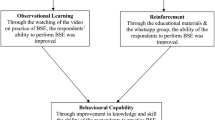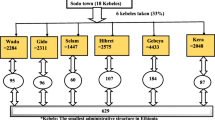Abstract
The relationship between breast self examination (BSE) and breast cancer stage at diagnosis was examined in 616 women aged 15-59 years. Differences in tumour characteristics between those not practising BSE and those practising but not taught were small and inconstant. However, women who had both practised and had been taught BSE had more favourable tumours than the non-practising group. The difference was most marked in terms of tumour size and the involvement of axillary nodes. The proportions of women in the non-BSE and taught-BSE groups with each characteristic were respectively: size less than or equal to 2 cm 33% and 45%, T1 clinical stage 27% and 42%, and N0 pathological stage 37% and 50%. This advantage to taught-BSE women persisted after adjustment for the identified confounding factors of age, social class and oral contraceptive use. The likely impact on breast cancer mortality is difficult to assess, although the potential benefit of the lead time gained must not be ignored when assessing the costs and benefits of BSE.
Similar content being viewed by others
Rights and permissions
About this article
Cite this article
Mant, D., Vessey, M., Neil, A. et al. Breast self examination and breast cancer stage at diagnosis. Br J Cancer 55, 207–211 (1987). https://doi.org/10.1038/bjc.1987.39
Issue Date:
DOI: https://doi.org/10.1038/bjc.1987.39
- Springer Nature Limited
This article is cited by
-
Breast Self-Examination: the Case for a Second Look
Current Breast Cancer Reports (2020)
-
“Voices of Fear and Safety” Women’s ambivalence towards breast cancer and breast health: a qualitative study from Jordan
BMC Women's Health (2012)
-
Preliminary results of primary screening for breast cancer with the Mama Program
Sozial- und Pr�ventivmedizin SPM (1993)




